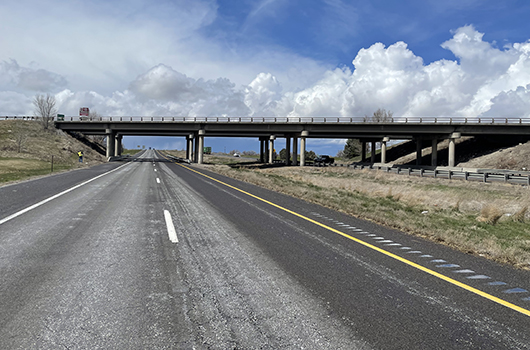Construction to upgrade the Burley Interchange (Exit 208) on Interstate 84 is set to begin next week, and the nearby Heyburn Interchange (Exit 211) is scheduled to begin soon after. Both multi-year projects include replacing the interchanges, with funding coming from Governor Little’s Leading Idaho program.
Both interchanges were built in the 1960s. Feedback from open houses held in 2022 and 2023 led to the selection of new designs that are safer and capable of handling more traffic.
Work will begin at the Burley Interchange on Monday, Feb. 26, with crews bringing in equipment and setting up the work zone. Drivers should plan for nighttime lane closures while they place barrier and start removing vegetation in the median.
Upgrading the interchange will take until late 2026 and is expected to cost $85.1 million. Drivers can generally expect:
- All lanes on I-84 will be open during the day. Traffic will be shifted many times to run on temporary pavement to keep traffic flowing.
- Nighttime lane closures on I-84 as needed.
- Nighttime ramp closures as needed.
- Traffic shifts on State Highway 27 crossing over the interstate.
The new interchange will feature longer ramps to access I-84 and two new signals to control ramp traffic. The two existing westbound on-ramps will be consolidated to one ramp, and all bridges will be replaced. View the detailed design here.
This year the contractor will work on building temporary lanes in the median to shift traffic onto, start reconstructing westbound lanes with concrete and forming embankments for future ramps. Crews will also begin to replace the westbound bridge over the canal to the west of the interchange and the northbound bridge for SH-27 traffic over the interstate.
To stay up to date, visit the project website to sign up for email updates. Live traffic impacts can always be checked at 511.idaho.gov.
Construction at the nearby Heyburn Interchange is expected to start in mid-March.
The Leading Idaho program allows ITD to accelerate project timelines to address rapid growth and build critical infrastructure today that would otherwise take many years to fund and build.

